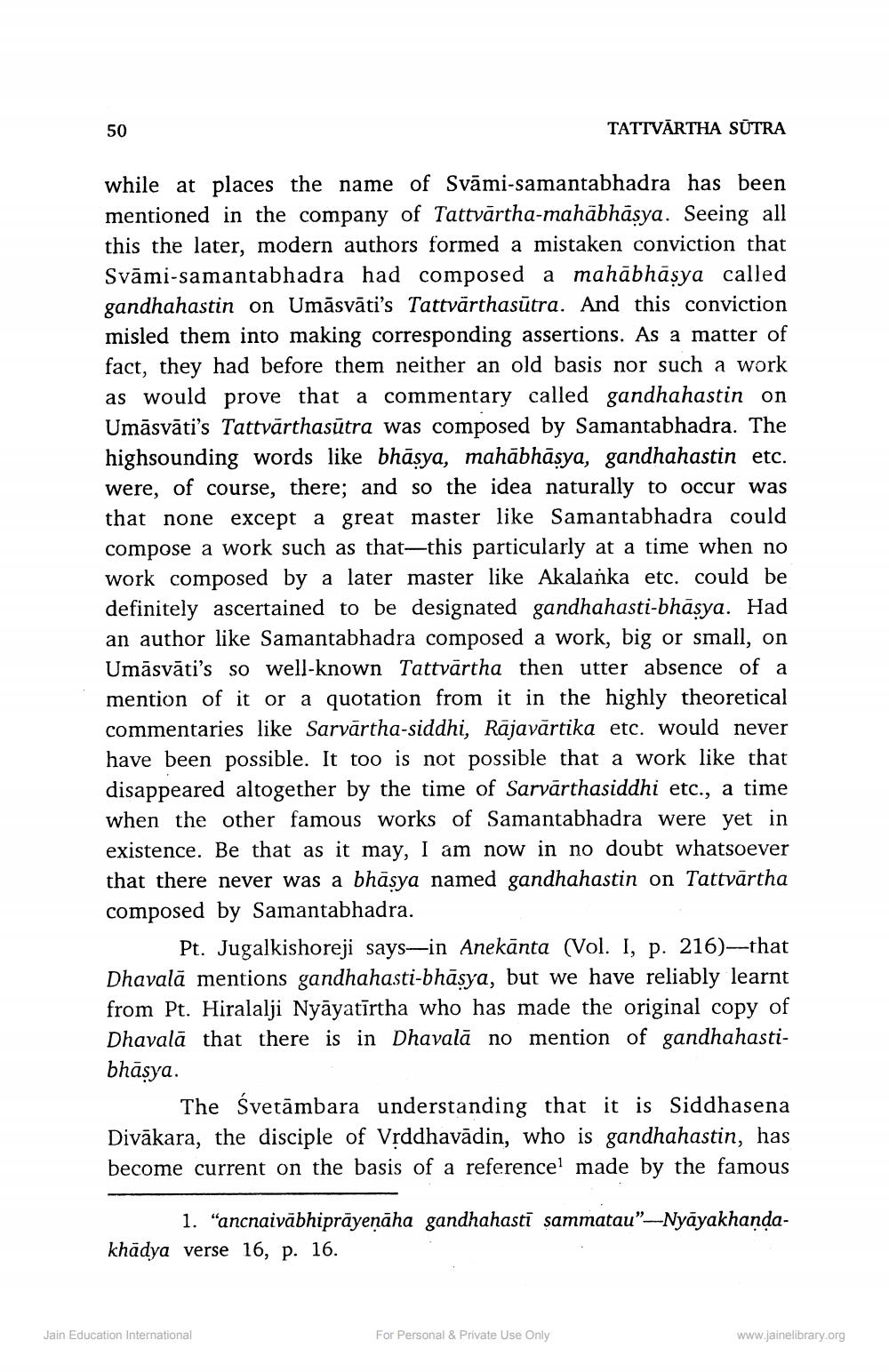________________
50
while at places the name of Svami-samantabhadra has been mentioned in the company of Tattvārtha-mahābhāṣya. Seeing all this the later, modern authors formed a mistaken conviction that Svāmi-samantabhadra had composed a mahābhāṣya called gandhahastin on Umāsvāti's Tattvärthasūtra. And this conviction misled them into making corresponding assertions. As a matter of fact, they had before them neither an old basis nor such a work as would prove that a commentary called gandhahastin on Umāsvāti's Tattvärthasūtra was composed by Samantabhadra. The highsounding words like bhāṣya, mahābhāṣya, gandhahastin etc. were, of course, there; and so the idea naturally to occur was that none except a great master like Samantabhadra could compose a work such as that-this particularly at a time when no work composed by a later master like Akalanka etc. could be definitely ascertained to be designated gandhahasti-bhāṣya. Had an author like Samantabhadra composed a work, big or small, on Umāsvāti's so well-known Tattvärtha then utter absence of a mention of it or a quotation from it in the highly theoretical commentaries like Sarvārtha-siddhi, Rājavārtika etc. would never have been possible. It too is not possible that a work like that disappeared altogether by the time of Sarvārthasiddhi etc., a time when the other famous works of Samantabhadra were yet in existence. Be that as it may, I am now in no doubt whatsoever that there never was a bhāṣya named gandhahastin on Tattvärtha composed by Samantabhadra.
TATTVĀRTHA SŪTRA
Pt. Jugalkishoreji says-in Anekānta (Vol. I, p. 216)-that Dhavala mentions gandhahasti-bhāṣya, but we have reliably learnt from Pt. Hiralalji Nyāyatīrtha who has made the original copy of Dhavala that there is in Dhavala no mention of gandhahastibhāṣya.
The Svetambara understanding that it is Siddhasena Divakara, the disciple of Vṛddhavādin, who is gandhahastin, has become current on the basis of a reference1 made by the famous
1. "ancnaivābhiprāyeṇāha gandhahasti sammatau"-Nyāyakhandakhadya verse 16, p. 16.
Jain Education International
For Personal & Private Use Only
www.jainelibrary.org




